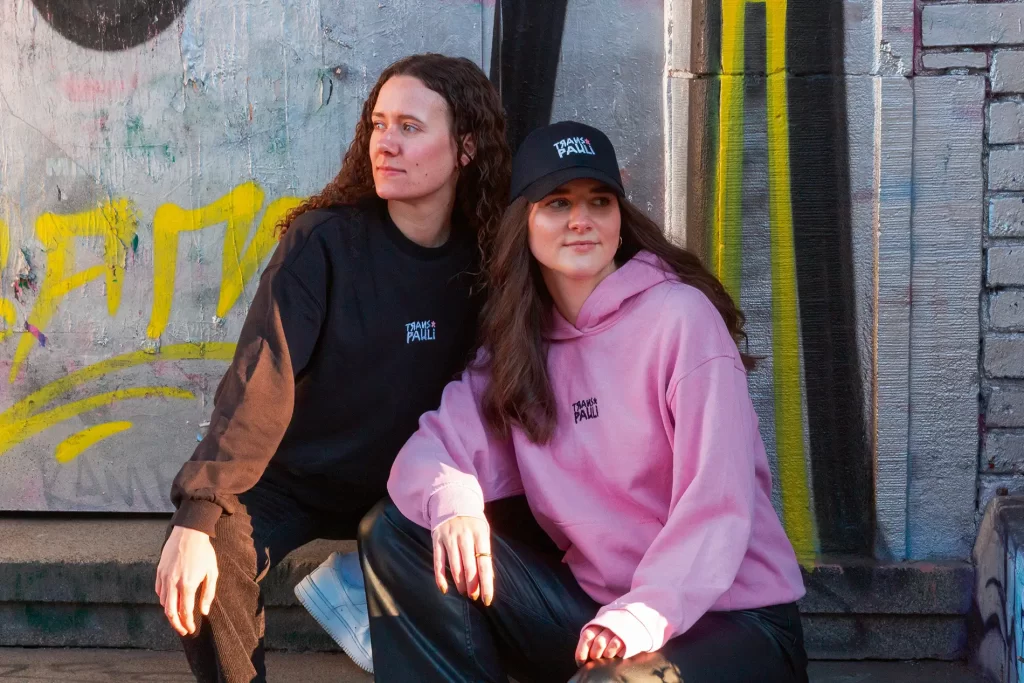Queer players, gender-neutral toilets in stadiums, declarations against discrimination - there are also positive developments towards equality and participation in soccer. But trans people still have to contend with hostility, which is why Marit Hölting wanted to do her bit to counteract the stigmatization in her bachelor's thesis at the Münster School of Design. Under the name Trans*Pauli, she created a fictitious campaign for FC St. Pauli against queer hostility, which could also serve as a model for other clubs.



How did you come up with the topic, what made you decide to dedicate your thesis to it?
Marit Hölting: The actual topic came about because, at the beginning of my research, I dealt a lot with the increasing queer hostility in Germany. I also had contact with two board members of the LSVD NRW (Lesbian and Gay Association NRW) at the beginning of my bachelor's thesis, who told me about current, important issues. One of these was the Self-Determination Act. As the announcement of the law had already triggered major debates in the social media that had little to do with the actual reality of trans* people's lives, I wanted to do my bit to counteract this stigmatization.
Why did you choose FC St. Pauli as the sender of your fictitious campaign?
When choosing the sender, it was very important for me to have an honest stance on the issue. In view of the huge outcry over the draft law, I needed a sender who already has a strong opinion on this and similar issues and is not afraid to defend it. I wanted to avoid pinkwashing at all costs and FC St. Pauli has always stood up for the rights of its fans and players. The Hamburg club's value system was therefore a perfect fit for the message my project was intended to convey.

The fans of St. Pauli are considered open and progressive. Isn't that "Preaching to the Converted"? In your opinion, would such a campaign also be conceivable for other clubs, could it serve as a role model?
Since being trans* is unfortunately still very controversial in Germany and sometimes even triggers discussions among progressive people, I wanted to give my project a framework that would definitely support the rights of trans* people from a grassroots level. I wanted the backing and support of a broad community. I wanted to avoid harming trans* people with associations or senders that were not yet progressive.
But I am sure that the campaign can serve as a role model. Especially because a lot is happening in the soccer world at the moment and, for example, more support is being shown for homosexual players. This is also shown by the group coming out, which was initiated in May and is intended to be a starting signal for more visibility. It is moving in the right direction, even if there is still a lot of room for improvement.





Can you tell me anything else about the design of the campaign?
When choosing the color, I moved away from the brown and red that the FCSP normally uses and instead focused on black, which is also frequently used in the club's communication. In combination with the light pink and blue of the transfer flag, I wanted to bring the two worlds together. In the design, I emphasized the color pink to give trans women in particular more space in the design, because they are the ones whose realities of life are usually ignored and distorted in the discussion.
I changed the logo colors for the campaign. The modification of the logo reflects the visible changes that transgender people go through in the course of their self-determination process and is intended to symbolize the courageous step that is associated with a name or gender reassignment. This visual change not only addresses the external transformation, but also the striving for authenticity and self-determination. The dark style underlines the seriousness of the theme of self-determination. FC St. Pauli remains the sender, but recedes into the background to give the important topic enough space.
I chose OC Revolt 1 as the font, which with its tape character is intended to transfer the look of street demonstrations to the campaign. I wanted to pick up on the rawness and authenticity of a self-painted banner.
What means of communication does your campaign include?
The campaign includes a key visual, a poster series, two large billboards and various merchandise (buttons / stickers / sweaters / T-shirts / caps / beanies) to spread the campaign further in the fan and supporter community.

You can find more information about training and studies as well as final theses here ... and the 20-page Grafikmagazin 02.24 focuses on "Education".
